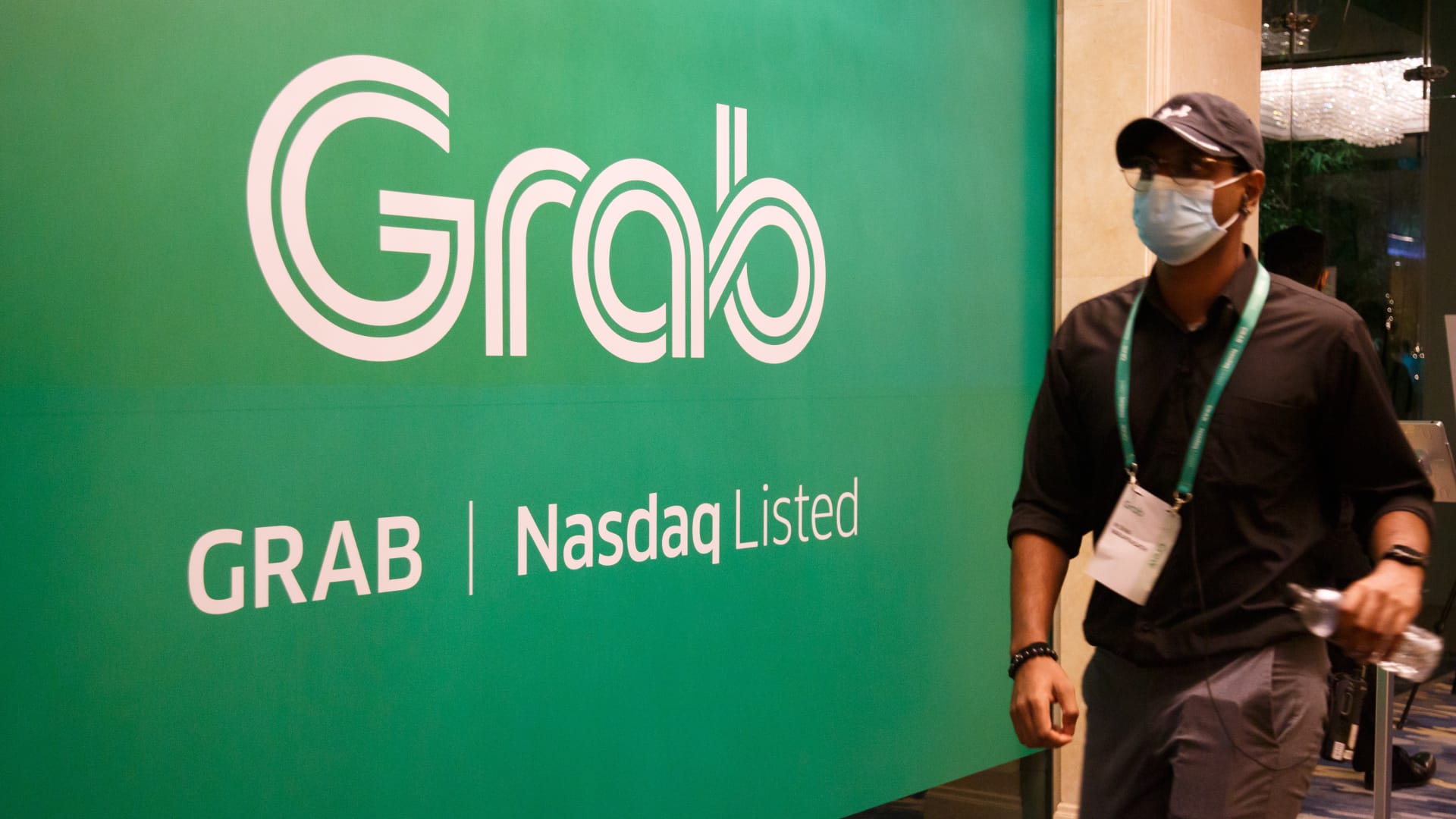A attendee walks past a banner with a Grab logo before a bell-ringing ceremony as Grab begins trading on the Nasdaq, in Singapore, on Thursday, Dec. 2, 2021.
Ore Huiying | Bloomberg | Getty Images
SINGAPORE — Grab posted its first-ever profitable quarter, raking in $11 million in profit, the Southeast Asian ride-hailing giant said in its fourth-quarter earnings report Thursday.
This compares with a $391 million loss recorded in the same period a year ago. The boost was “primarily due to the improvement in Group adjusted EBITDA, fair value changes in investments, and lowered share-based compensation expenses,” the company said.
Revenue for the quarter hit $653 million, exceeding LSEG analysts’ estimates of $634.86 million.
Losses for full year 2023 came to $485 million, down 72% from $1.74 billion a year ago.
In addition to ride-hailing, the company also provides financial services like payments and insurance, as well as deliveries for food, groceries and packages.
“We exited [2023 with] mobility exceeding pre-Covid levels. We are seeing a very strong demand in the mobility space,” Grab CFO Peter Oey told CNBC in an exclusive interview on Friday, adding that tourism is “growing very much.”
“If you look at the deliveries business, we have another record 13% year-over-year growth. We have now more users on our platform also at the same time. So we have really strong momentum,” he said on CNBC’s “Squawk Box Asia.”
Grab announced Thursday it would be repurchasing up to $500 million worth of class A ordinary shares for the first time.
Grab was largely unprofitable during its years of operation, having amassed billions of dollars in losses since its inception in 2012.
In the initial years of business, tech startups tend to prioritize growth over profitability, which usually means burning a lot of cash. But with global macro uncertainties slowing growth, they have been forced to renew their focus on profitability and be more prudent with costs.
During the fourth quarter, total incentives — which include partner and consumer incentives — were further reduced to 7.3% of total value of goods sold, Grab said in its report. That’s compared to 8.2% in the same period a year ago “as we continued to improve the health of our marketplace.”
Grab had been doling out incentives to attract drivers and passengers to its platform but that’s tapering now as the company moves to drive up profitability.
On whether Grab would reach a time where it wouldn’t need to incentivize people to stay on the platform, Oey said incentives will “always be a lever” for the business.
“I don’t think we’re going to see a world where there’s no incentive whatsoever,” he told CNBC, adding that incentives help “to make sure we have enough supply” of drivers and attract price-sensitive customers.
For 2024, Grab expects revenue to come in between $2.70 billion and $2.75 billion, lower than LSEG analysts’ consensus of $2.8 billion.
Grab’s shares closed 8.41% lower on Thursday. Its share price has plummeted 75.8% from its $13.06 opening price in December 2021, when the firm first listed on the Nasdaq.
